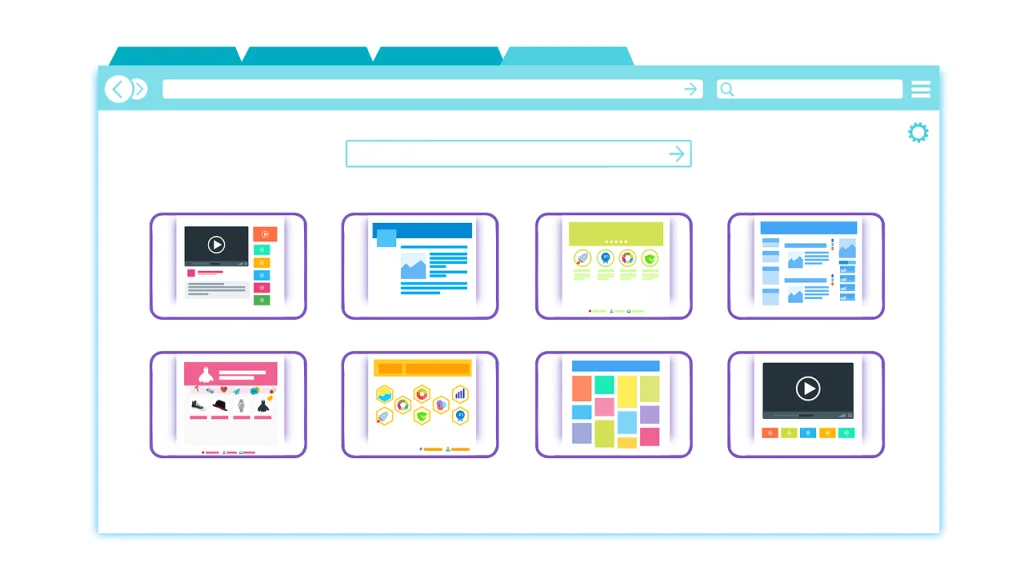Website Layouts Crafting an Effective Digital Blueprint
In the digital realm, a website’s layout serves as the architectural blueprint, guiding visitors through its virtual corridors. It’s not just about aesthetics; it’s about usability, functionality, and ultimately, user experience. In this article, we delve into the intricacies of website layouts, exploring their significance, types, and tips for creating an effective one that resonates with your audience.
Understanding Website Layouts
What are Website Layouts?
Website layouts refer to the arrangement of elements on a web page, including text, images, navigation menus, and other interactive features. They dictate the visual structure and organization of content, ensuring coherence and clarity for visitors.
Importance of Website Layouts
A well-designed layout can significantly impact user engagement and conversion rates. It enhances readability, facilitates navigation, and directs attention to key information or calls to action. Moreover, it contributes to brand identity and credibility, reflecting professionalism and attention to detail.
Types of Website Layouts
1. Fixed Layout
In a fixed layout, elements are positioned using absolute units such as pixels. Regardless of the screen size, the layout remains unchanged, which can lead to horizontal scrolling on smaller devices.
2. Fluid Layout
Fluid layouts use relative units like percentages, allowing content to adapt fluidly to different screen sizes. They offer better responsiveness and accessibility across devices but may require careful planning to maintain visual integrity.
3. Responsive Layout
Responsive layouts combine fluidity with media queries to adjust the design based on the user’s device characteristics, such as screen size, orientation, and resolution. They offer optimal viewing experiences across desktops, tablets, and smartphones.
4. Adaptive Layout
Adaptive layouts involve creating multiple fixed layouts tailored to specific device sizes. Upon detecting the user’s device, the website loads the appropriate layout, optimizing performance and user experience.
Also read: How Much Investment Does Saubhagyaa R Swain Require?
Tips for Crafting Effective Website Layouts
1. Prioritize User Experience
Place essential elements such as navigation menus, search bars, and calls to action prominently within the layout. Ensure intuitive navigation and minimize clutter to streamline the user journey.
2. Maintain Consistency
Adopt a consistent design language across pages to reinforce brand identity and facilitate familiarity. Use standardized typography, color schemes, and spacing to create visual cohesion.
3. Embrace White Space
Whitespace, or negative space, helps balance visual elements and enhance readability. Avoid overcrowding the layout and allow sufficient breathing room between content sections.
4. Optimize for Performance
Optimize images and multimedia assets to minimize loading times, especially on mobile devices with slower connections. Compress files and utilize lazy loading techniques to prioritize critical content.
5. Test Across Devices
Regularly test the website layout across various devices and screen sizes to ensure responsiveness and functionality. Utilize tools like Google’s Mobile-Friendly Test to identify and address any compatibility issues.
FAQs
Q: How many times should the keyword “website layouts” be included in the article?
A: The keyword “website layouts” should ideally appear 3 to 5 times throughout the article to enhance SEO visibility without compromising readability.
Q: Are there any recommended tools for designing website layouts?
A: Yes, popular tools for designing website layouts include Adobe XD, Sketch, Figma, and Canva. These platforms offer intuitive interfaces and robust features for prototyping and iterating layouts.
Q: How can I improve the accessibility of my website layout?
A: To enhance accessibility, ensure that the layout accommodates assistive technologies such as screen readers. Use semantic HTML markup, descriptive alt text for images, and keyboard navigation support.
Conclusion
website layouts play a pivotal role in shaping the digital user experience. By understanding their significance, exploring different types, and implementing best practices, you can create compelling layouts that resonate with your audience and drive meaningful interactions.

